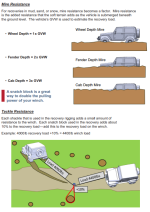ttouring
Member
Many years ago I was bush hogging wth a tractor I had that didn't have a live PTO or over running clutch. While Bush hogging my pond bank I steered to close to the water. I tried to counter it by turning steering wheel, well it kept going straght. It all happened so quickly. When the tractor got stopped I was waist deep(sitting on the tractor) in the water. The bush hog acted like a flywheel and pushing the clutch in didn't do any good. It took 2 of my neighbors with 4 wheel drive pickups to get out the pond. I did manage to shut the engine down before it went under. So I had change ALL the fluids and buy a over running clutch.

